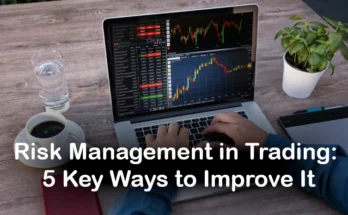Technical analysis and fundamental analysis are two of the most commonly used methods for stock selection. In Hong Kong, technical analysisis more commonly used than fundamental analysis.
Both these approaches have pros and cons, but ultimately it will come down to personal preference as to which one you use. Some people prefer technical analysis because it can be more precise regarding timing entries and exits. Others prefer fundamental analysis because they feel it gives them a better understanding of a company’s overall health and prospects. For those interested in giving it a shot, check out Saxo Bank to try out these two methods.
Technical analysis
In trading, technical analysis predicts future price movements by analysing past price data and trends. Technical analysts predict that prices move in trends and that these trends can be identified and exploited.
Fundamental analysis
Fundamental analysis values stocks by analysing a company’s financial statements and other factors. Fundamental analysts believe that a stock’s price reflects all relevant information about a company and can identify undervalued or overvalued stocks by analysing this information.
What are the benefits of using technical and fundamental analysis in stock selection?
Technical analysis can identify trends and predict future price movements, which can help investors decide when to buy or sell a stock.
Fundamental analysis can value stocks and identify undervalued or overvalued stocks. Investors in Hong Kong can use this information to decide which stocks to buy or sell.
What are the limitations of using technical and fundamental analysis in stock selection?
Technical analysis does not consider all the factors that can affect a stock’s price, such as economic news or political events, which means that technical analysts can make inaccurate predictions.
Fundamental analysis is based on historical data, so it cannot predict future events. In addition, fundamental analysis is a complex process, and it can be challenging to value a stock accurately.
How to start trading stocks in Hong Kong?
If you’re interested in trading stocks in Hong Kong, there are a few things you need to do first.
First, open a brokerage account with a Hong Kong-based broker. Next, you’ll need to deposit funds into your account. And finally, you’ll need to place your trade.
To open a brokerage account, you’ll need to provide personal information, such as your name, address, date of birth, and proof of identity and residency. Once your account is opened, you can deposit funds into it using a bank transfer or a credit/debit card.
When you’re ready to place your trade, you’ll need to choose a stock, an order type, and an investment amount. You can then submit your order and wait for it to be executed.
What are the costs of trading stocks in Hong Kong?
The costs of trading stocks in Hong Kong vary depending on your broker. Some brokers charge commission fees, while others only charge a spread. Commission fees are usually a percentage of the trade value, while spreads are a fixed amount.
In addition to broker fees, you’ll also need to pay stamp duty on all buy trades. The stamp duty rate in Hong Kong is 0.2% of the trade value.
How can I find a reputable broker to trade stocks within Hong Kong?
There are a few ways to find a reputable broker to trade stocks within Hong Kong.
You can ask friends, relatives and colleagues for recommendations or search online for broker reviews. And finally, you can check the broker’s website for regulatory information.
A reputable broker like Saxo Bank will be regulated by the Securities and Futures Commission (SFC) of Hong Kong, which oversees the securities and futures industry in the region.
The final word
Stock selection is an integral part of investment in Hong Kong. Technical and fundamental analysis can help investors decide which stocks to buy or sell. However, remember that no single method is perfect, and there are risks involved in all investments. If you want to invest in stocks in Hong Kong, be sure to do your research and contact a financial advisor to get started.
Also Read: Risk Management in Trading: 5 Key Ways to Improve It




